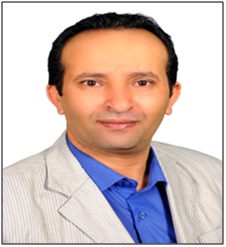ASSESSMENT OF SOME CLINICAL AND LABORATORY PROFILES AMONG DENGUE FEVER PATIENTS AT HAJJAH GOVERNMENT, YEMEN
Keywords:
Clinical characterization, Dengue fever, Hajjah Government, YemenAbstract
Background and objective: Classical dengue (DF) is a viral disease transmitted by the bite of an infected mosquito, usually Aedes aegypti or Aedes albopictus. Residents without access to sophisticated laboratory tools need simple clinical and/or laboratory indicators that can provide a reliable diagnosis of dengue fever before admission to the hospital. Therefore, this study was designed to evaluate some clinical and laboratory features among confirmed cases with dengue fever in the government of Hajjah, Yemen to differentiate between dengue (DF) and other febrile diseases in the dengue affected population.
Methods: Clinical data and blood samples were collected from 46 confirmed cases of dengue fever, which were hospitalizedat the Yasser and Thabit Hospital from September to December 2019. The collected samples were examined for some hematological tests, including: hemoglobin (Hb), white blood cells counts (WBCs), and hematocrit (HCT), and a platelet count (PLT). Confirmation of dengue was performed with a non-structural protein tape (NS1).
Results: The results obtained showed that males have a higher infection rate (73.91%) of DF compared to females (26.09%). The recurrence rate was also highest (69.56%) among the 16-30 year-olds. Regarding clinical symptoms, fever and headache occurred in 100%, nausea in 95.65%, and vomiting in 78.26% of the patients, while rashes were less frequent (19.56%). Hematological abnormalities frequently occurred with WBC (89.1%), PLT (84.78%), and Hb (63.04%), while HCT was only abnormal in 23.91% of cases.
Conclusion: A high frequency of clinical and laboratory variants can distinguish dengue fever from other causes of infection; Dengue fever is most common in males between the ages of 16 and 30. This is the first report documenting the occurrence of dengue fever in Hajjah governorate, which requires more attention to prevent and control it. Further prospective studies are needed to build a valid and generalizable algorithm to guide the differential diagnosis of dengue fever in endemic countries such as Yemen.
.gif)
Peer Review History:
Received 3 February 2021; Revised 5 March; Accepted 9 April; Available online 15 May 2021
Academic Editor: Prof. Kumud Upadhyaya, Kumaon University, Nainital, UK, India, upkuupku@gmail.com
Reviewer(s) detail:
Dr. Bilge Ahsen KARA , Ankara Gazi Mustafa Kemal Hospital, Turkey, ahsndkyc@gmail.com
, Ankara Gazi Mustafa Kemal Hospital, Turkey, ahsndkyc@gmail.com
Prof. Dr. Hassan A.H. Al-Shamahy , Sana'a University, Yemen, shmahe@yemen.net.ye
, Sana'a University, Yemen, shmahe@yemen.net.ye
Dr. Muhammad Zahid Iqbal , AIMST University, Malaysia, drmmziqbal@gmail.com
, AIMST University, Malaysia, drmmziqbal@gmail.com
Downloads

Published
How to Cite
Issue
Section

This work is licensed under a Creative Commons Attribution-NonCommercial 4.0 International License.









 .
.